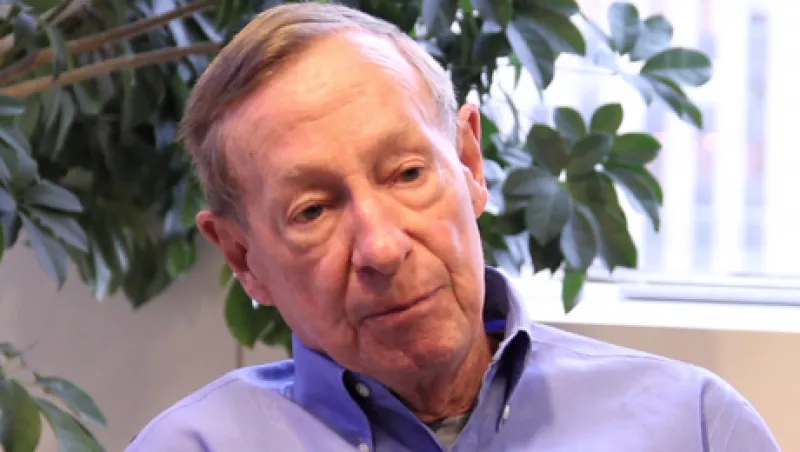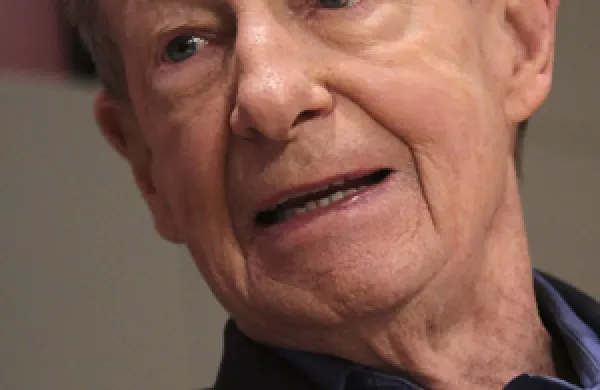It is hard to believe that just one month ago Barton Biggs was planning to climb Machu Picchu, the fifteenth century Inca site in Peru. However, when the physically fit, 79-year-old founder of hedge fund Traxis Partners, who is best known for his prescient macro calls during his days at Morgan Stanley, suddenly and unexpectedly turned ill a few weeks ago, he figured he would just postpone his trip, scheduled for the following week.
The trip never took place, and on Saturday, July 14, Biggs passed away. On one hand, his death took the firm’s other three partners by surprise. How could it not when their leader was planning to climb a celebrated mountain ridge and instead died within weeks of falling ill? “It happened so quickly,” recalls Amer Bisat, managing partner at Traxis, who was Biggs’s right-hand man and now heads the firm.
As Biggs lay ill in a hospital, Bisat and the other two partners, Andy Skov and Krishen Sud, had to manage the company, manage the fund Biggs personally oversaw — the $1.2 billion-Traxis has five funds altogether, including the flagship Traxis Fund, which had been collectively managed by four individuals — and communicate what was going on to investors.
Alas, Bisat would learn very quickly that it is one thing to have a succession plan and another to put it in place as events suddenly unfold. “Certain decisions have to be taken on the spot,” he says in a phone interview, slightly weary from barely sleeping for four or five days.
Initially, the three partners implemented what Bisat calls a run of the mill plan the firm had for the unexpected — if a key person can’t be reached, is on vacation or quits. That would turn out to be the easy part.
The key, however, was implementing what he calls Plan B. Bisat immediately took over risk control, monitoring the portfolios and insuring he was on top of critical information. After Biggs was incapacitated for a week, the firm communicated what was transpiring with investors and other key people. “Communication is crucial, crucial,” Bisat emphasizes.
After Biggs died, Bisat and the other two partners were on the phone with investors, carefully crafting letters to investors and making key decisions regarding the business and the funds.
For example, they decided to maintain four of the funds — including the flagship fund — but liquidate the fund Biggs personally was managing: the Traxis Global Equity Macro Fund. Investors can either redeem by the end of July or put the money into the Traxis Fund. “All this requires collective consensus,” Bisat stresses.
In hindsight, he says, the firm was ready for the unexpected because while Biggs was clearly the senior partner, founder and the identity of the firm, Bisat had been quietly playing a major role for some time. In the past year and a half, he went with Biggs to meet investors, ran meetings, managed the research effort and overall understood the finances of the business. “It must be clear who is next in command,” he stresses. “It was obvious I was Barton’s right-hand man.”
He stresses that even if everyone knew he was the heir apparent, had he never played any of these roles, the firm may have suffered after Biggs passed away.
It is also important that the people running the firm have strong credentials. Bisat, who is also portfolio manager for the Traxis Emerging Markets Opportunities Fund as well as a portfolio manager for the Traxis Fund, was previously a partner at Rubicon — a macro hedge fund — where he managed their emerging markets allocation. Previously, Bisat held portfolio management positions at Morgan Stanley Investment Management and UBS’s proprietary desk and was chief emerging markets economist at Salomon Brothers (Europe). Between 1991 and 1997, he was a senior economist at the IMF.
Skov is portfolio manager for the Traxis Emerging Markets Equity Fund, as well as a portfolio manager for the Traxis Fund. He worked in corporate finance at Bankers Trust in the Latin America division before moving on to Morgan Stanley Investment Management, where he initially served as the portfolio manager for the Latin America Fund and then became the portfolio manager for Morgan Stanley’s Emerging Markets Fund.
Sud is portfolio manager for the Traxis-Sivik Global Healthcare Funds as well as a portfolio manager for the flagship fund. Prior to joining the firm, Sud was a founding partner and the managing general partner of Sivik Global Healthcare, which he merged with Traxis in 2011. Prior to forming Sivik in June 2001, Krishen was the portfolio manager of the Galleon Healthcare Funds where he built and managed the firm’s healthcare fund business to $1.5 billion in assets in four years.
Of course, the key to Traxis surviving life after Biggs is for investors to remain with the firm. So far — not surprisingly — they have been supportive.
Now, Bisat, Skov and Sud must convince investors the firm’s platform and systems are strong enough to maintain the success of the firm, which no doubt was built heavily on the reputation of its legendary founder and his halo effect.
Biggs’s philosophy, built on his reputation of prescient calls in emerging markets and macro investing in general, is well entrenched in the firm’s own philosophy.
And Traxis has enjoyed mostly success. The Traxis Fund has generated better than a 5 percent annualized return since its inception in 2003 despite losing 5.35 percent last year. It made 3.65 percent in 2010 and 34 percent in 2009. It was roughly flat through the first six months of this year.
Bisat stresses the firm has a number of very senior portfolio managers who can maintain the firm’s success. And Biggs was one among several key people on the flagship fund.
Ultimately, however, the firm needs to perform in order to convince investors to hang in there for the long haul. “Performance matters,” Bisat acknowledges. “It always does. So does the platform, research and volatility. We have a very, very strong firm.”
So far, it has passed the first test. Bisat is responsive and very open about telling the firm’s succession story to the media, part of his communication strategy. Not an easy task for an industry that generally considers opaqueness and unresponsiveness a badge of honor and a status symbol.
Says Bisat: “Keeping things secret is a sign of weakness.”






